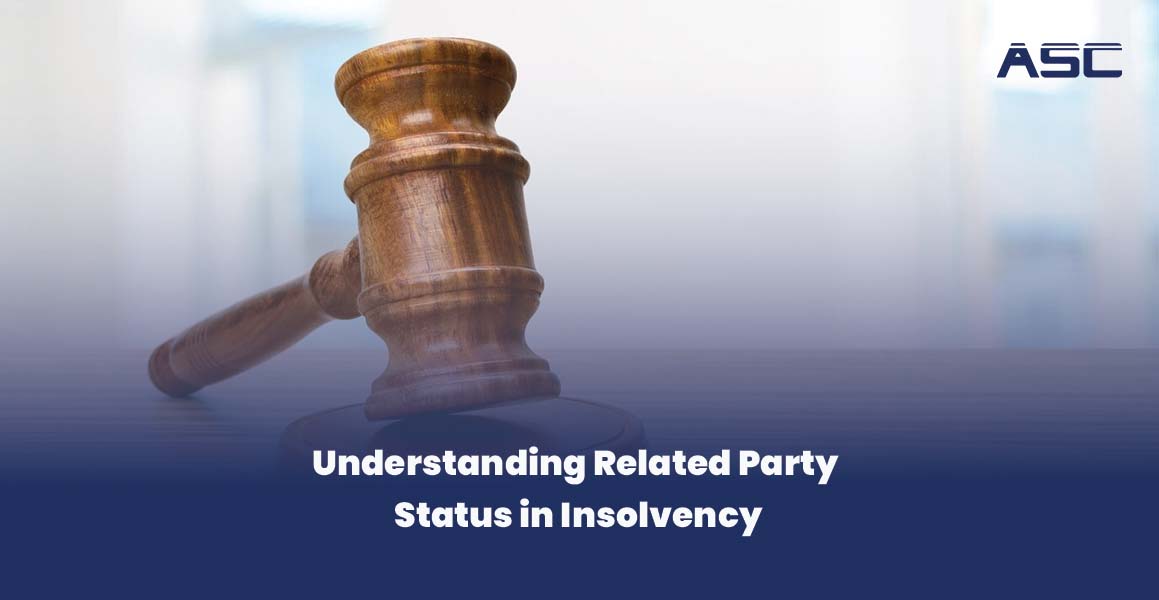Key Ruling on Related Party Status in Insolvency

In insolvency proceedings, the classification of a party as related can have far reaching implications from the distribution of assets and voting rights to the overall dynamics of creditor negotiations. Recently, the National Company Law Appellate Tribunal (NCLAT) weighed in on a contentious issue whether a termination notice, issued contrary to the terms of an executed agreement, can alter a partys related status. In this blog, we delve into the details of this matter, unraveling the legal principles, examining the case facts, and exploring the wider implications for debtors, creditors, and insolvency professionals.
The Contractual Bedrock: Establishing Related Party Status
At the heart of this discussion lies the executed agreement between the parties. In any contractual relationship, the terms agreed upon form the foundation for the relationship that follows. Here, the agreement explicitly established one partys related status a status that influences creditor voting, claim priorities, and the overall resolution process under the Insolvency and Bankruptcy Code (IBC).
- Binding Nature of Agreements: Once signed, contracts are meant to create certainty. They outline the rights and obligations of the parties and cannot be easily set aside by a unilateral act.
- Importance in Insolvency: In insolvency scenarios, stability is key. A well defined related party status provides clarity and helps maintain the balance between the interests of the debtor and the creditors.
The Controversy: Can a Termination Notice Change the Established Status?
The dispute arose when one party attempted to alter the pre established related party status by issuing a termination notice. This notice however, was inconsistent with the terms of the original agreement.
The Termination Notice Argument
- What It Claimed: The party issuing the notice contended that, based on their contractual rights to terminate the agreement under certain conditions, the relationship and thus the related party status should be altered.
- The Underlying Idea: Once the relationship is terminated, the termination notice purportedly severed the legal ties that had established the related status.
The Counterargument
- Respect for the Original Agreement: The opposing party argued that the related party status, once contractually fixed, is not subject to unilateral alteration. In other words, an agreement cannot be undone merely by sending a termination notice if that notice itself violates the agreed terms.
- Judicial Principle: Courts and tribunals have long held that contracts, once executed create binding obligations that cannot be casually disregarded by subsequent notices, especially when such notices conflict with the original terms.
The NCLATs Ruling: Upholding Contractual Integrity
The NCLATs decision in this case provides critical clarity. The tribunal firmly held that the related party status, as established by the executed agreement, cannot be changed by a termination notice that goes against the agreed terms.
Key Observations by the Tribunal
- Contract Over Notice: The tribunal emphasized that the legal relationship defined by the agreement takes precedence over any subsequent, inconsistent actions. The termination notice, being in breach of the contractual terms, failed to alter the related party status.
- Implications for Insolvency: Altering the related status through a unilateral notice would have disrupted the orderly framework set out by the IBC. The stability of creditor voting and claim prioritization would have been compromised if a party could simply change its classification on a whim.
- Maintaining Process Integrity: By rejecting the termination notice as a means to alter the related party status, the tribunal reinforced the principle that core contractual relationships must be respected throughout insolvency proceedings.
Broader Implications: Why This Matters
-
For Debtors
Bankrupt individuals must recognize that their contractual relationships especially those establishing related party status are not subject to change by their own unilateral actions. This limitation is designed to ensure a fair and controlled resolution process and to prevent any abuse that might hinder creditor recovery.
-
For Creditors
Creditors benefit from this ruling as it preserves the consistency of relationships in insolvency proceedings. With related party status firmly established by the original contract, creditors can rely on predictable standards when evaluating claims and casting votes on resolution plans.
-
For Insolvency Professionals
Insolvency practitioners, particularly bankruptcy trustees, play a pivotal role in managing and administering insolvency cases. The decision underscores their exclusive authority in handling critical steps such as filing for discharge and reinforces the need for professionals to adhere strictly to the contractual framework and statutory guidelines.
Comparative Perspective and Global Practices
The principle that a related party status established in a binding agreement cannot be unilaterally altered is not unique to Indian jurisprudence. In many common law jurisdictions such as the United Kingdom and the United States similar doctrines prevail. The emphasis is on:
- Contractual Certainty: Courts worldwide uphold the sanctity of contracts.
- Insolvency Process Integrity: A controlled, trustee led process is essential to balance debtor rehabilitation with creditor protection.
These international best practices lend additional support to the NCLATs ruling and demonstrate its alignment with global legal norms.
Conclusion
The recent NCLAT decision serves as an important reminder of the immutable nature of contractual relationships. Once related party status is established through a valid, executed agreement, it cannot be altered merely by sending a termination notice that is inconsistent with the agreed terms. This ruling not only reinforces the integrity of the insolvency process under the IBC but also protects the rights of creditors and ensures that the debtors journey towards a fresh start is conducted in a fair and orderly manner.
For debtors, creditors, and insolvency professionals alike, this decision underscores the need to respect and adhere to the foundational contractual principles that guide insolvency proceedings. As the IBC continues to evolve with further judicial and regulatory clarifications, the emphasis on trustee led, contractually sound processes will remain central to achieving balanced and effective resolutions.

Leave a Reply